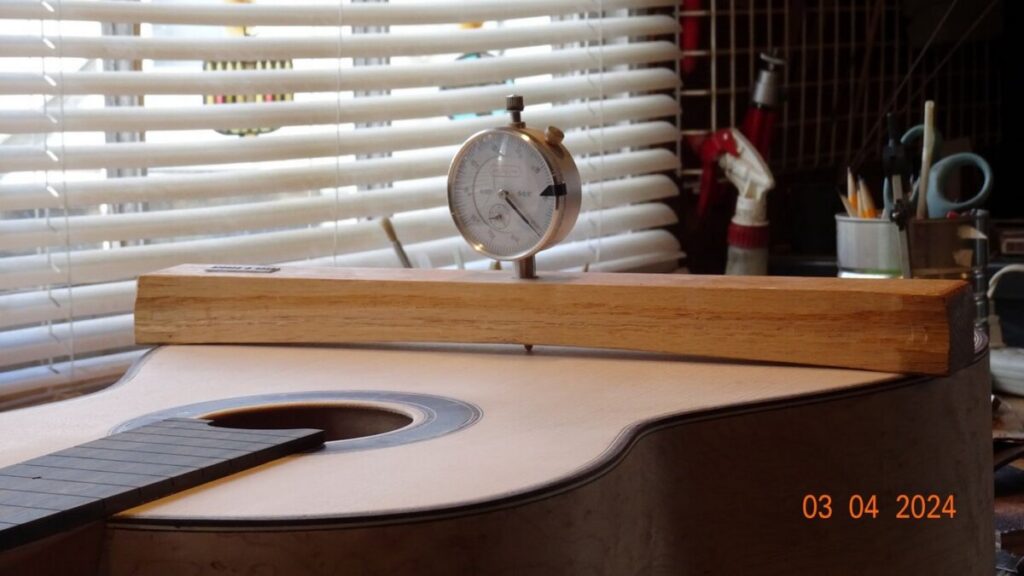
Let me know what you think.

Let me know what you think.
I made Mel a guitar 20 years ago, and here he is buying this lovely…. And seeming to appreciate it, even though it is slightly used. Before sending it off, I touched up the finish, and made and attached an arm-rest which is similar to one Mel said he liked. The back and side wood is Movingui, ribbon grain.
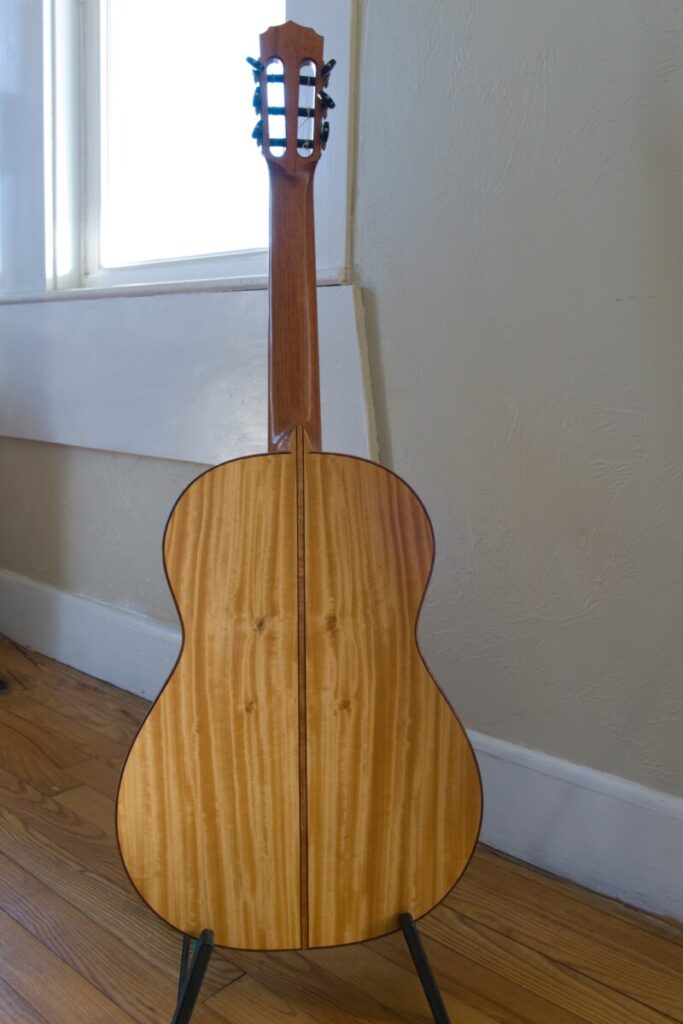
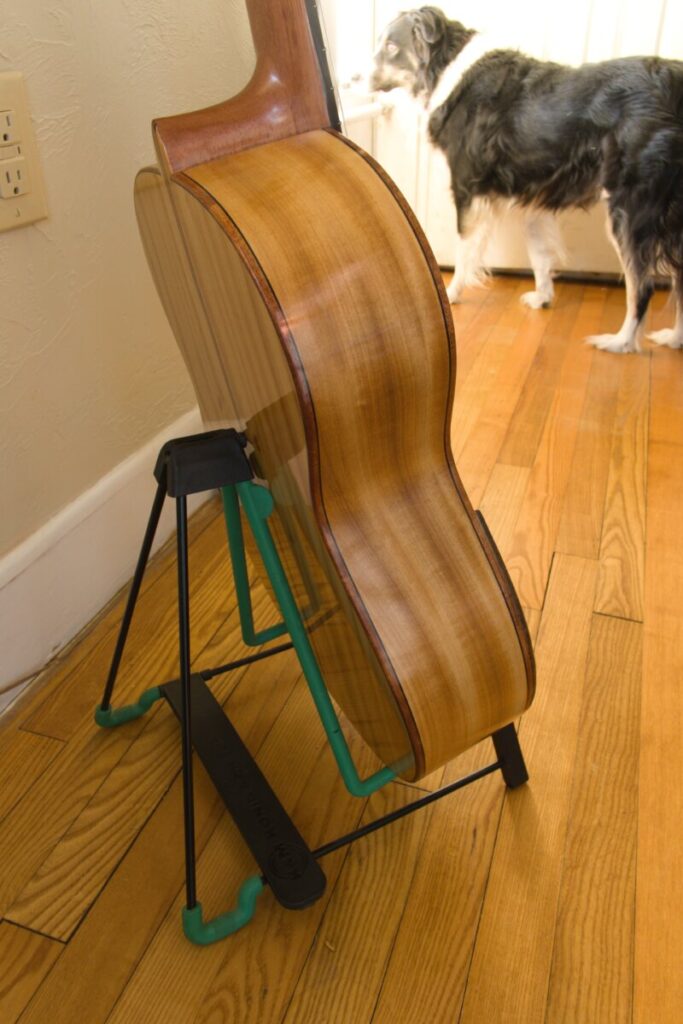
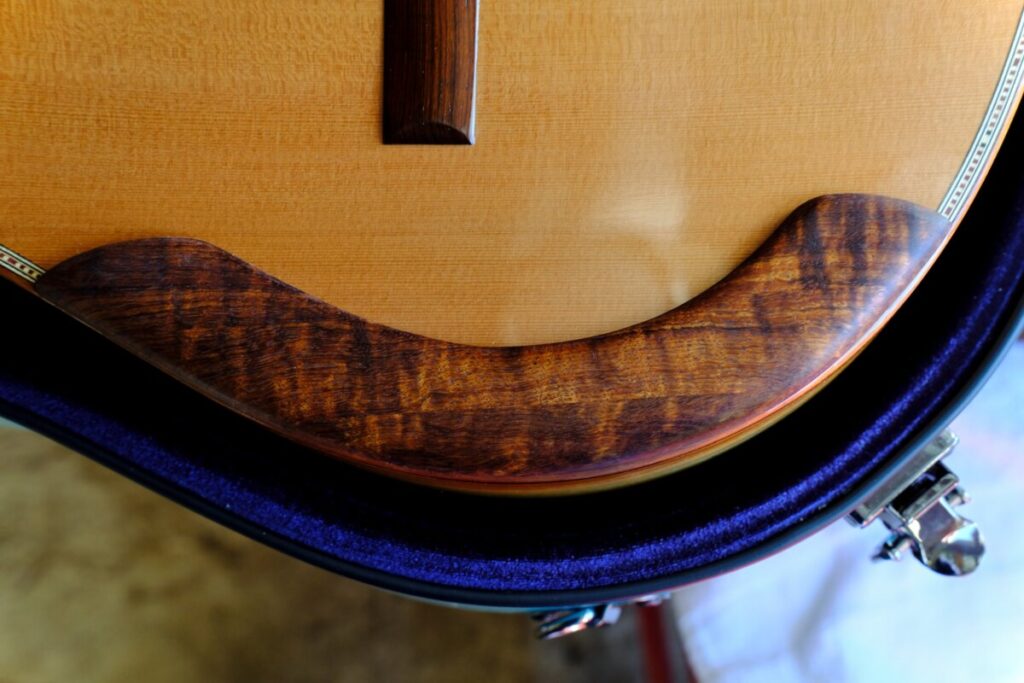

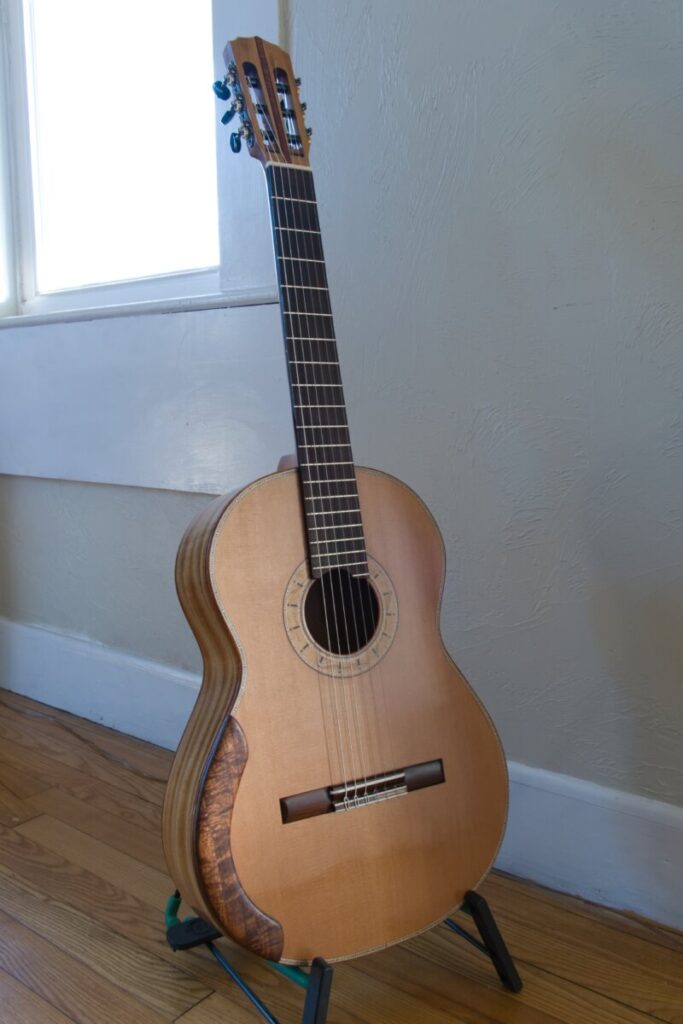
Mel has been playing mostly steel string acoustic guitar, but now he’s going for classical. He wrote me about the guitar experience, and gave permission to publish the pictures and the note.
On 1/20/2024 8:49 PM, Mel Hughes wrote:
Steve,
It’s been almost a full month now and I wanted to send you a note of thanks for this beautiful guitar. Everyday since BlackLeaf arrived, I’ve been playing her. Everyday I play, I learn a little something more about how to coax the sounds I want to hear out of her. Starting over is quite a journey. It would be so easy to just sit and noodle but the guitar deserves much better than noodling. So we’re working on basics – hand positions, finger flexibility and independence, tone production as well as revisiting rhythm studies, sight reading, all those things I’ve avoided so well for so many years.
When I went back to college after the army, I studied music for three years. It was almost all revelation to me. Growing up in Alabama, I had little or no exposure to classical music. I didn’t know what a cello was, seriously. But I remember finding recordings of Pablo Casals in the school library and being thunderstruck by the music and the man. And still today I keep thinking of this quote from him. “ In 1957 at the age of 80 Casals was the subject of a movie short, A Day in the Life of Pablo Casals. The movie’s director Robert Snyder asked Casals, “why he continues to practice four and five hours a day.” Casals answered: “Because I think I am making progress.”
I am making progress. Some days it is infinitesimal. But it is movement and it is reinvigorating. The Tarrega and Schubert pieces I keep hearing in my head are a ways off. But this guitar is more than capable of making that music beautifully.
So mostly, I warm up and practice my studies, then play some things I know that aren’t classical guitar repertoire. But almost every time I play, at some point I find some detail or part of the guitar that I haven’t really given my full attention. The other night, I was struck by the intricate binding around the guitar edges and is doubled around the rosette. Some folks drool over herringbone patterns. But I tell you, Steve Ganz, it’s only because they haven’t seen this! And that only scratches the surface. I’m going to shoot more photos when the weather warms up a bit and we’re done with snow. She really is beautiful not just sonically but visually. I take her to work with me so I can practice during slow periods.
Mel
Mel Hughes
Sparta, TN
I’ve had this wood for a while. I could make it into a nice guitar. It’s not dramatically figured. It is very straight grained, well quartered, which as a luthier, I love. But there is some flame as well.
Last year Valerie got a new guitar I built for her. After having it for a year, she seems to be enjoying it.
Hi,
So nice to hear from you. I was just thinking about the fact that I’ve had Carina Nebula for a year now. We have totally bonded. I play in two guitar ensembles plus solo pieces so she gets lots of use. I get a lot of compliments on the sound. The guitar is in great shape (see attached) — I’ve put on a tiny scratch or two but that’s life. Maybe next year, I’ll get you to put on a fresh coat of French polish if that’s something you do? or would recommend?
I hope all is going well for you and looking forward to seeing you at a VCGS concert -we’ve got a great season coming up.
cheers and many thanks again,
Valerie
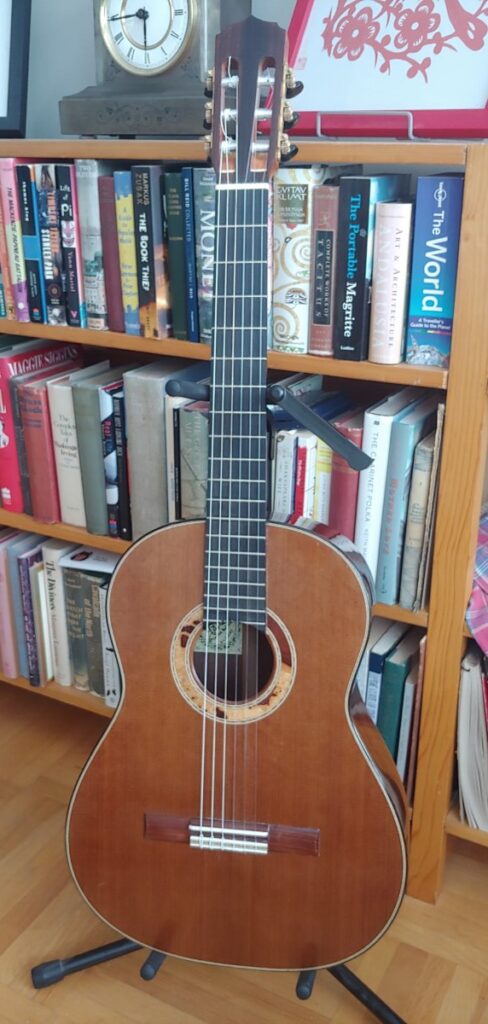
Here is a video for lovers of classical guitars. It was made by Antigoni Goni about 4 guitars, each built by Jose Romanillos before his passing. It’s quite a beautiful video, and certainly meaningful to me: I went to Spain to build a guitar in Jose’s workshop in 2004. So I am familiar not only with Jose, but also his widow Marian Winspear, and Gerhard Oldiges who appear in the video. I learned many things in Siguenza Spain. Both guitar and life lessons.
Watch the video.
Back in June of 2022 I posted a video of William Bajzek playing Bolero by Arcas on a guitar I made in the fall of 2020. Remember 2020? Pandemic. A time of isolation. Not necessary a bad thing for a mostly solitary luthier like me. But, I certainly missed hobnobbing with my guitar friends.
Another video – Same guitar a year earlier.
In May 2021 I got a call from Eric at Pacific Rim Tonewoods, asking if I could show up for a house concert the next day at a house on Lummi Island. In 2021 the first vaccinations were just starting. I got one, so I said yes. (YES!) Miroslav Tadic wanted to play a classical guitar along with some steel string guitars made for Pacific Rim by a guy in Australia (Trevor Gore). So the next day I found myself with my friend Merrilee at Steve McMinn’s house along with a small audience. Here is with Yvette Hazwarth. Nice ensemble.
Pacific Rim Tonewoods – IN CONCERT – Miroslav Tadic & Yvette Holzwart from Pacific Rim Tonewoods on Vimeo.
I wrote about this event more than a year ago, but just found the video! The embedded video starts with Miro playing my guitar, but there are other pieces (steel string guitars) you can see and hear if you like. Worthwhile listening. Miroslav Tadic and Yvette
Here’s a picture Merrilee snapped during the performance. Joy.
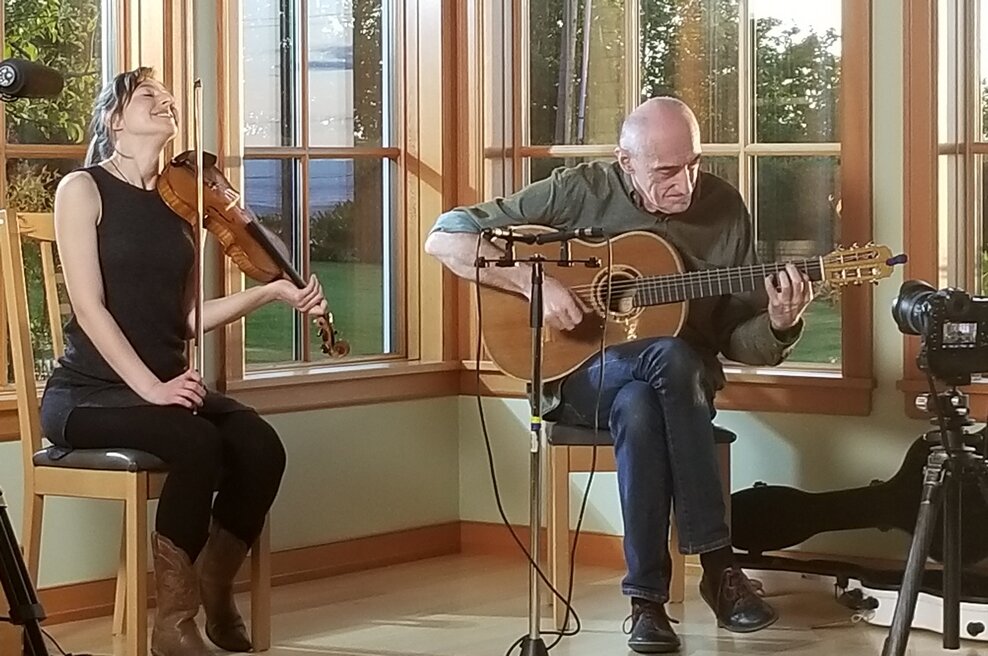
As it happens… David Feingold has a recent guitar that I built earlier this year. David’s son, Jacob Feingold, is an accomplished photographer and he took some pictures of his dad with the guitar. They are really nice studies, or perhaps environmental portraits.
For more, please visit jacobfeingold.com
Here’s some wood I am considering for use in the rosette of an upcoming guitar.

